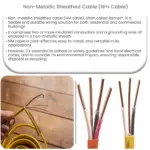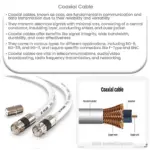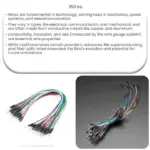Explore the 5 most common types of electrical wires and cables – NM, AC, UF, Metallic Conduit, and Coaxial, used in various settings.
5 Most Common Types of Electrical Wire and Cable
Whether you’re working on a residential or commercial project, understanding the different types of electrical wire and cable is crucial. Let’s dive into the five most common types used today.
1. Non-Metallic (NM) Cable
Non-Metallic or NM cables, often referred to as ‘Romex’ after a popular brand, are the most commonly used wire type in residential applications. This type of wire is covered in a flexible plastic sheath, which houses two or more wires.
2. Armored (AC) Cable
Armored Cable, also known as BX, is wrapped in a flexible metal sheath. This metal sheath provides an additional layer of protection compared to NM cable. It’s often used in commercial and industrial settings where a higher level of protection is needed.
3. Underground Feeder (UF) Cable
Underground Feeder or UF cable is a type of non-metallic cable designed specifically for use in wet locations or underground. It is similar to NM cable, but the wires are encased in a solid plastic sheath rather than a flexible one.
4. Metallic Conduit
Metallic Conduit, including types such as EMT (Electrical Metallic Tubing), is used to house and protect electrical wires. It’s often used in commercial and industrial applications where physical damage to the wire is a significant risk.
5. Coaxial Cable
Coaxial Cable is a type of electrical cable that has an inner conductor surrounded by a tubular insulating layer, surrounded by a tubular conducting shield. It’s commonly used for connecting televisions and internet modems in residential settings.
In conclusion, the type of wire or cable you should use depends on the application, environment, and local building codes. Always consult with a professional electrician or electrical engineer to ensure you’re using the right type for your project.




